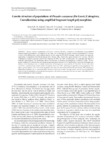Por favor, use este identificador para citar o enlazar este ítem:
http://www.alice.cnptia.embrapa.br/alice/handle/doc/976679Registro completo de metadatos
| Campo DC | Valor | Lengua/Idioma |
|---|---|---|
| dc.contributor.author | ZALESKI, S. R. M. | pt_BR |
| dc.contributor.author | LAZZARI, S. M. N. | pt_BR |
| dc.contributor.author | LAZZAROTTO, C. M. | pt_BR |
| dc.contributor.author | PANZAVOLTA, T. | pt_BR |
| dc.contributor.author | IEDE, E. T. | pt_BR |
| dc.contributor.author | MARQUES, F. de A. | pt_BR |
| dc.date.accessioned | 2014-01-20T11:11:11Z | pt_BR |
| dc.date.available | 2014-01-20T11:11:11Z | pt_BR |
| dc.date.created | 2014-01-20 | pt_BR |
| dc.date.issued | 2013 | pt_BR |
| dc.identifier.citation | Revista Brasileira de Entomologia, v. 7, n. 4, p. 405-410, Dec. 2013. | pt_BR |
| dc.identifier.uri | http://www.alice.cnptia.embrapa.br/alice/handle/doc/976679 | pt_BR |
| dc.description | Genetic structure of populations of Pissodes castaneus (De Geer) (Coleoptera, Curculionidae) using amplified fragment length polymorphism . The objective of this study was to determine the genetic structure of populations of Pissodes castaneus from different areas and on different species of Pinus using the PCR-AFLP technique. Twenty samples were analyzed, representing 19 populations from Brazil and one from Florence, Italy, which is the region of origin of P. castaneus . The four combinations of primers generated a total of 367 fragments of DNA, and 100% of polymorphic loci, indicating high degree of molecular polymorphism. The dendrogram did not reveal trends for grouping the populations in relation to origin. The low genetic similarity (0.11 between the most distant groups) and genetic distances of 0.13 and 0.44 for 10 out of the 20 samples m ay indicate several founding events or multiple introductions of heterogeneous strains into Brazil. The allelic fixation index (Fs t) was 0.3851, considered high, and the number of migrants (Nm) was 0.3991, indicating low gene flow among populations. The highest genetic distances were between the population from Irani, SC and Cambará do Sul, RS and Bituruna, PR, indicating an independent founding event or a particular allelic fixation in the former location. The high genetic diversity among population s points out that the populations are genetically heterogeneous with a diverse gene pool in the surveyed areas, what makes them t o respond differently to control measures | pt_BR |
| dc.language.iso | eng | eng |
| dc.rights | openAccess | eng |
| dc.subject | Gorgulho do pínus | pt_BR |
| dc.subject | Praga florestal | pt_BR |
| dc.subject | Genética de população | pt_BR |
| dc.subject | Banded pine weevil | pt_BR |
| dc.subject | Molecular marker | pt_BR |
| dc.title | Genetic structure of populations of Pissodes castaneus (De Geer) (Coleoptera, Curculionidae) using amplified fragment length polymorphism. | pt_BR |
| dc.type | Artigo de periódico | pt_BR |
| dc.date.updated | 2015-03-24T11:11:11Z | pt_BR |
| dc.subject.thesagro | Inseto | pt_BR |
| dc.subject.thesagro | Marcador Molecular | pt_BR |
| dc.subject.nalthesaurus | Insecta | pt_BR |
| dc.subject.nalthesaurus | Pissodes castaneus | pt_BR |
| dc.subject.nalthesaurus | population genetics | pt_BR |
| riaa.ainfo.id | 976679 | pt_BR |
| riaa.ainfo.lastupdate | 2015-03-24 | pt_BR |
| dc.contributor.institution | Scheila R. M. Zaleski, UFPR; Sonia M. N. Lazzari, UFPR; Crisleide M. Lazzarotto, UFPR; Tiziana Panzavolta, Università degli Studi di Firenze; EDSON TADEU IEDE, CNPF; Francisco de A. Marques, UFPR. | pt_BR |
| Aparece en las colecciones: | Artigo em periódico indexado (CNPF)  | |
Ficheros en este ítem:
| Fichero | Descripción | Tamaño | Formato | |
|---|---|---|---|---|
| 2013EdsonTRBEGenetic.pdf | 73.81 kB | Adobe PDF |  Visualizar/Abrir |









